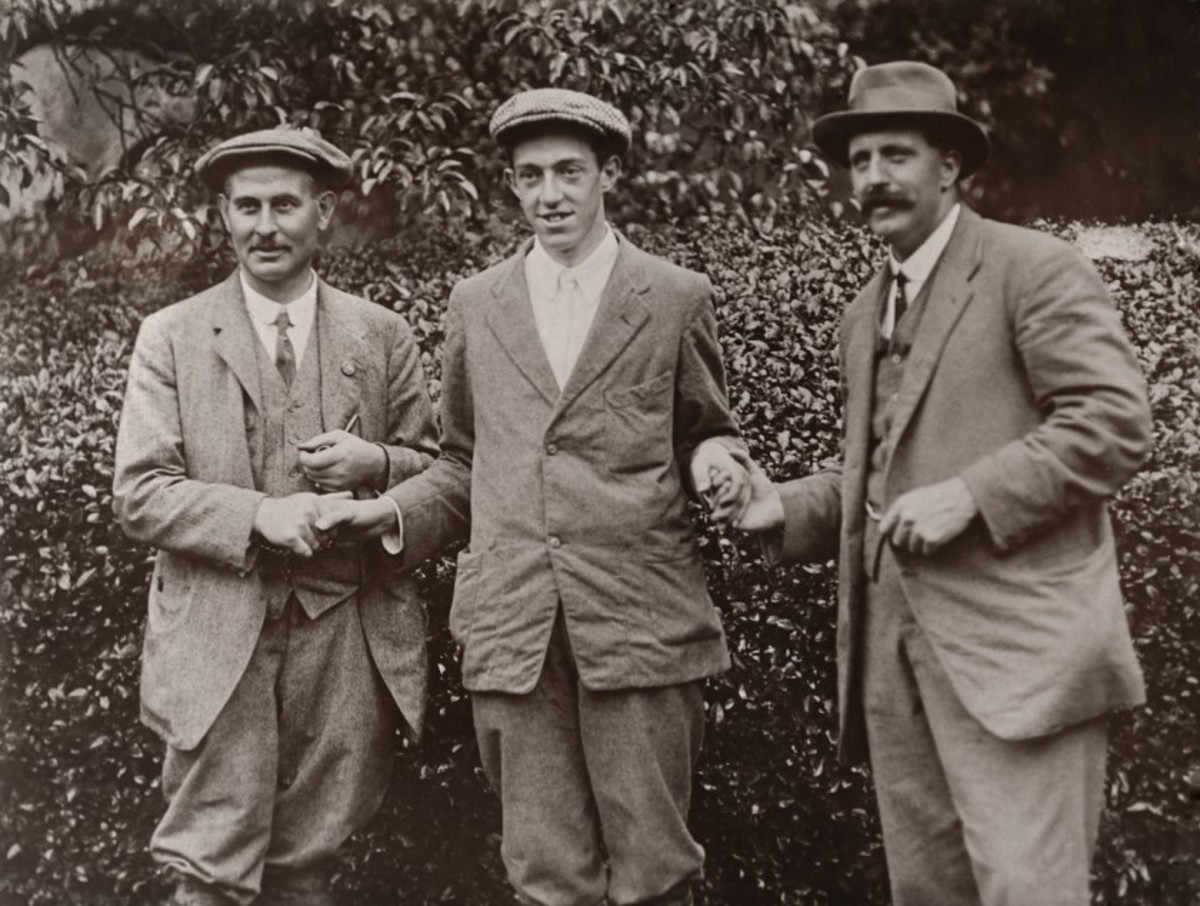Any World Golf Hall of Fame expansion should include Ted Ray

It’s easy to applaud the move by the World Golf Hall of Fame, which announced this week that it had expanded to 18 the number of media members involved in the nomination and selection of golf’s immortals. It’s clearly not enough, but it’s a start.
Considering that the golf media are the ones who cover this sport and the fact that almost every other sport’s hall-of-fame nominees and selectees are determined by the media, it seems only appropriate that golf’s Fourth Estate has a bigger say.
So, because I’m not one of the 18 – and I’m in no way complaining about that fact – I wanted to offer my opinion before the next meeting for the 2021 induction class.

Most golf fans know Ted Ray as the burly member of the playoff threesome in the 1913 U.S. Open at The Country Club in Brookline, Mass., where an unheralded 20-year-old local amateur, Francis Ouimet, won the championship.
But Ray’s resume features so much more than that playoff loss.
Beginning with the 1899 British Open, Ray, from the Isle of Jersey, finished out of the top 20 just once in golf’s two major championships. He won the 1912 British Open and, in only his second appearance at the original American major, the 1920 U.S. Open. Ray would miss the cut in the British Open only twice, in 1931 and 1937, when he was 54 and 60, respectively.
Because of the time and cost of travel a century ago, Ray made only three trips to America, for the U.S. Opens in 1913, 1920 and 1927.
When Ray won the 1920 U.S. Open, future hall-of-famers Leo Diegel, Jock Hutchison and Harry Vardon were among the runners-up, with Bobby Jones four shots back.
The next day, Vardon, a fellow citizen of the Isle of Jersey, wrote a story about Ray’s victory that appeared in the afternoon Milwaukee Journal on Aug. 14.
“A man who has the reputation of brilliance rather than steadiness won the victory on steadiness,” Vardon wrote.
Ray was a big man for his day, at 6 feet and about 220 pounds, and he could drive the ball longer than most of his competitors, but questionable putting often held Ray back. He obviously rolled the ball well enough to win two major championships in an era before the Masters. (He did not play in the U.S. PGA Championship, which was established in 1916.)
In his newspaper piece, Vardon went on to quote Ray after his victory in the U.S. Open: “I have never seen a finer field of golfers in any tournament, and it took more than ability to make the strokes to win it.”
Because of World War I, Ray would lose five chances in his prime to play the British Open (1915-19). When the championship resumed in 1920 at Royal Cinque Ports Golf Club, he would finish third.
Ray would go on to captain the first and unofficial Ryder Cup team for Great Britain, at Wentworth in 1926, and the first official Ryder Cup, in 1927 at Worchester, Mass.
In today’s voting environment for the World Golf Hall of Fame, winning two major championships heralds an elite status and generally warrants a spot in the St. Augustine, Fla., shrine. Add his 12 top-10 finishes in golf’s limited number of major championships in that era, including two runners-up, and his 40-plus professional victories and Ray should be a shoo-in.
The World Golf Hall of Fame is littered with players who never have won a major championship, including Peter Alliss, who was inducted in 2012, and Isao Aoki, a 2004 inductee.
Why Ray, who died in 1943 at age 66, is not part of the elite club is difficult to explain. Hopefully, the third player in that monumental 1913 playoff in suburban Boston will join Vardon and Ouimet in the hall.
Nothing else makes sense.
And after Ray gets the nod, maybe we could take a solid look at Macdonald Smith, who won 25 times on the PGA Tour, including three Western Open titles when that tournament was considered by the media to be a major championship.
To receive Morning Read’s newsletters, subscribe for free here.
